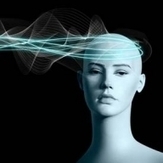Research and publish the best content.
Get Started for FREE
Sign up with Facebook Sign up with X
I don't have a Facebook or a X account
Already have an account: Login
 Your new post is loading... Your new post is loading...
 Your new post is loading... Your new post is loading...

Andreas Pappas's curator insight,
March 28, 2014 12:42 AM
Although the video is quite long, it manages to thoroughly address the concepts and difficulties behind developing a quantum super computer. Nevertheless, the language used though-out the video is somewhat complex and without an understanding of the metalanguage used it is difficult to follow. Therefore, this a good resource for those with an advanced knowledge and understanding of quantum computers. |
|












